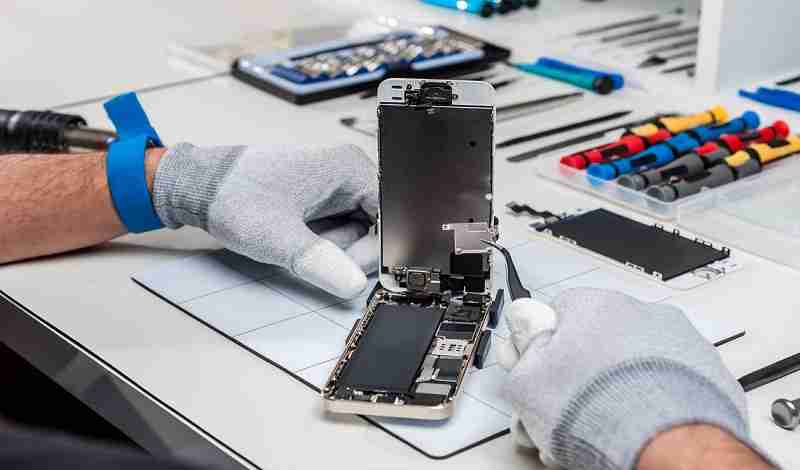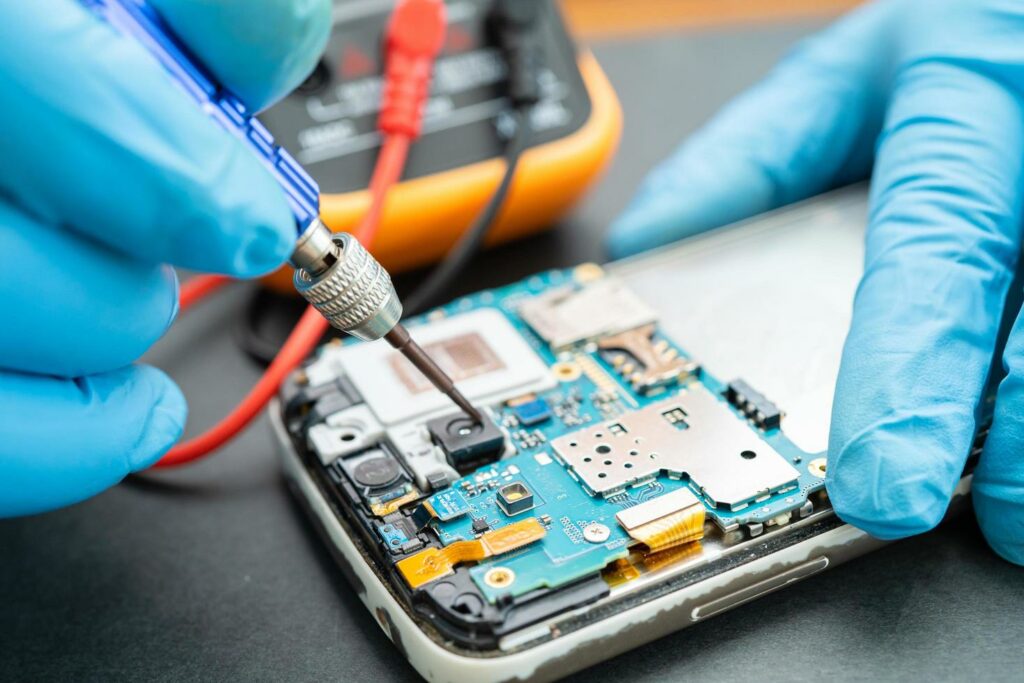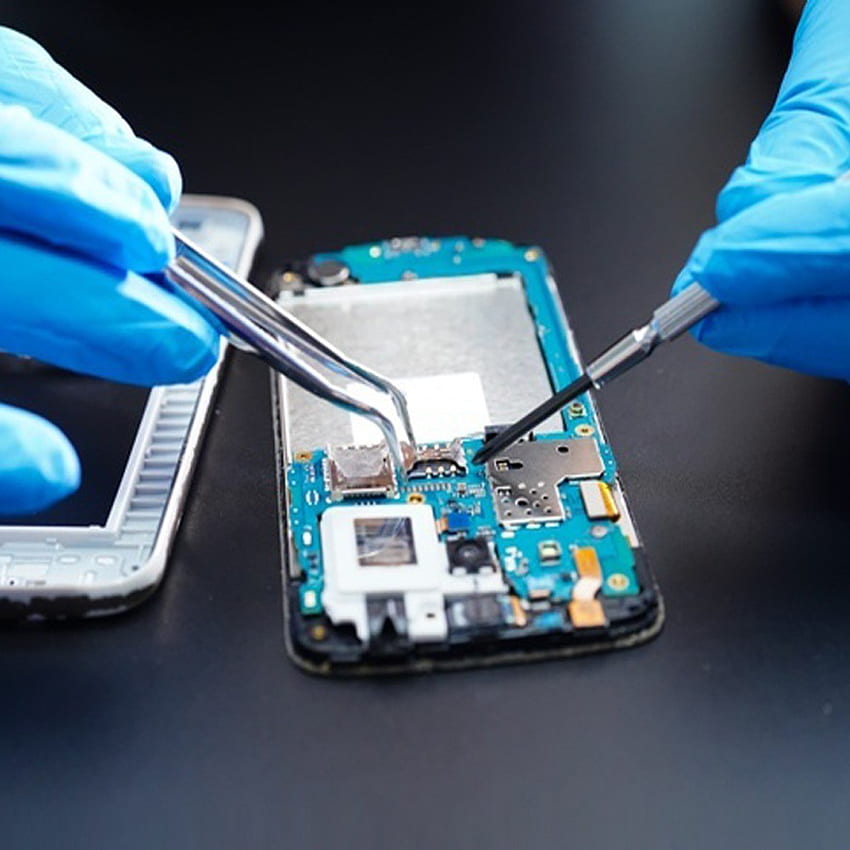
Introduction:
In the age of smartphones, our lives are intricately woven with these compact wonders. From communication to productivity, these devices have become indispensable. However, when the inevitable occurs and your smartphone falters, the prospect of mobile repair can be daunting. Fear not! In this guide, we’ll delve into the world of mobile repairing, demystifying the process and empowering you to breathe new life into your cherished device.
Understanding the Basics: Anatomy of a Smartphone
Before embarking on the journey of mobile repair, it’s essential to grasp the fundamental components of your device. A typical smartphone comprises a display, battery, motherboard, camera modules, speakers, and various connectors. Familiarizing yourself with these elements sets the stage for effective troubleshooting and repair.
Tools of the Trade: Essential Equipment for Mobile Repair
To tackle mobile repair like a pro, assembling the right tools is crucial. Here’s a list of essential equipment that every aspiring mobile repair enthusiast should have:
- Screwdrivers and Pry Tools: Opening up a smartphone requires precision. Invest in high-quality screwdrivers and pry tools designed for mobile devices.
- Anti-static Mat and Wrist Strap: Protect delicate electronic components from static electricity by working on an anti-static mat and wearing a wrist strap.
- Tweezers: Fine-tipped tweezers aid in handling small components and connectors during the repair process.
- Suction Cup: Useful for lifting the display off the phone, a suction cup helps separate components without causing damage.
- Heat Gun or Hair Dryer: Applying controlled heat can loosen the adhesive, making disassemble components like the display easier.
- Multimeter: An indispensable tool for troubleshooting electrical issues, a multimeter helps measure voltage, current, and resistance.
- Magnifying Glass or Microscope: For intricate work, especially on small connectors or soldering, a magnifying glass or microscope is invaluable.
- Adhesive Strips and Replacement Parts: Stock up on adhesive strips for resealing the device after repair, and consider having common replacement parts on hand, such as batteries, screens, and connectors.

Common Mobile Repair Issues and Solutions
- Cracked Screen:
- Solution: Replacing a cracked screen is one of the most common mobile repairs. Begin by carefully removing the broken screen using pry tools. Install the new screen, ensuring proper alignment, and secure it in place.
- Battery Replacement:
- Solution: Over time, smartphone batteries degrade, leading to reduced battery life. Replace the battery by opening the device, disconnecting the old battery, and attaching the new one. Exercise caution to avoid damaging other components.
- Water Damage:
- Solution: Act swiftly if your phone encounters water. Power it off immediately, disassemble it, and use a moisture-absorbing agent. Clean the components with a high-percentage isopropyl alcohol and let them dry thoroughly before reassembly.
- Charging Port Issues:
- Solution: A faulty charging port can hinder your device’s charging ability. Replace the charging port by carefully disconnecting the old one and installing a new, functional port.
- Software Glitches:
- Solution: Software issues often manifest as glitches, freezes, or crashes. Attempt to resolve these by performing a factory reset, updating the operating system, or seeking guidance from the device’s official support channels.
- Camera Malfunctions:
- Solution: If your camera fails to function, it might be a hardware or software issue. Check for loose connections or damaged components. If necessary, replace the camera module or update the camera app.
Safety First: Precautions for Mobile Repair
While venturing into mobile repair can be empowering, it’s crucial to prioritize safety to avoid personal injury or further damage to your device. Here are some safety precautions to keep in mind:
- Power Off the Device: Always power off the device before attempting any repair. This minimizes the risk of electrical shock or damage to sensitive components.
- Disconnect the Battery: If possible, disconnect the battery to eliminate the risk of electric shock during the repair process.
- Work in a Well-Lit Area: Adequate lighting ensures better visibility and reduces the chances of mistakes during the repair.
- Follow Proper Disposal Procedures: Dispose of damaged or old components responsibly, adhering to local regulations for electronic waste.
- Educate Yourself: Before tackling a specific repair, educate yourself thoroughly. Watch tutorial videos, read guides, and understand the intricacies of the process.
Advanced Techniques: Soldering and Component-Level Repair
For those seeking to elevate their mobile repair skills, delving into soldering and component-level repair opens up new possibilities. Soldering allows you to fix issues at the microscopic level, from repairing damaged connectors to addressing circuit board issues.
- Invest in a Quality Soldering Iron: A good soldering iron is a game-changer for intricate repairs. Choose one with adjustable temperature settings and a fine tip for precision work.
- Learn Proper Soldering Techniques: Mastering soldering techniques is crucial. Practice on scrap electronics before attempting repairs on your smartphone.
- Identify and Replace Faulty Components: With the aid of a schematic diagram for your device, identify faulty components on the motherboard. Replace these components carefully, using proper desoldering techniques.
- Practice Patience: Soldering and component-level repair require patience and a steady hand. Take your time to avoid causing additional damage.
Explore top-notch Digimob phone repair services at your fingertips! Visit https://digimob.com.au/collections/samsung-repairs/ to effortlessly book professional repairs for your device. Quality service is just a click away!
Conclusion: Empowering Users in the World of Mobile Repair
Mobile repair is not reserved for the tech elite; it’s a skill that anyone can acquire with the right tools, knowledge, and a dash of courage. As you embark on your mobile repair journey, remember that mistakes are part of the learning process. Start with simpler repairs, gradually advancing to more complex tasks as your confidence grows.
By mastering the art of mobile repair, you not only save money but also contribute to a sustainable approach to technology. Reviving a seemingly lifeless device not only brings a sense of accomplishment but also extends the lifespan of valuable electronics, reducing the environmental impact of electronic waste.
So, roll up your sleeves, gather your tools, and embark on the adventure of mobile repair. With a little know-how and a willingness to learn, you might find yourself not only fixing devices but also inspiring others to join the ranks of tech-savvy enthusiasts. Happy repairing!



